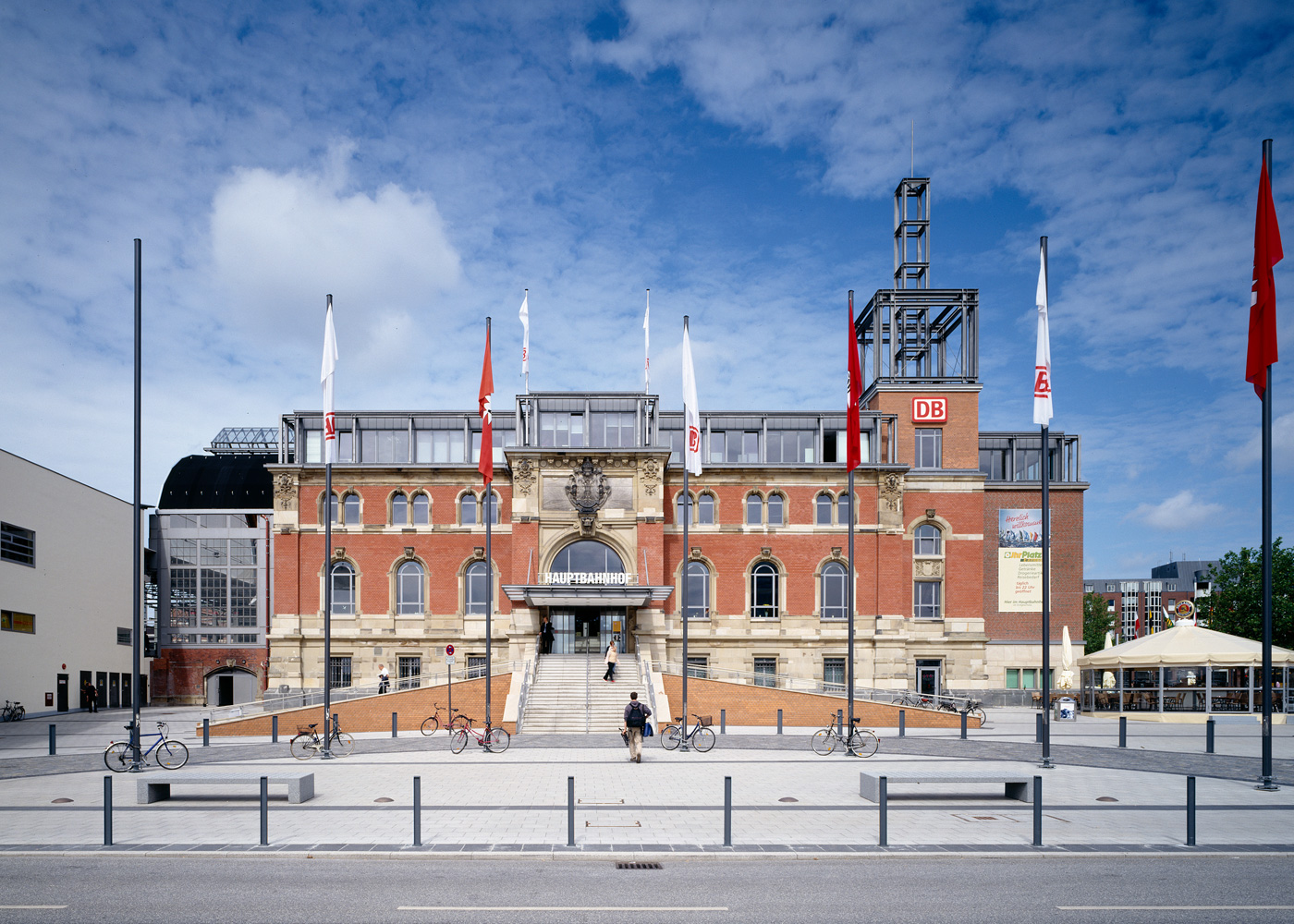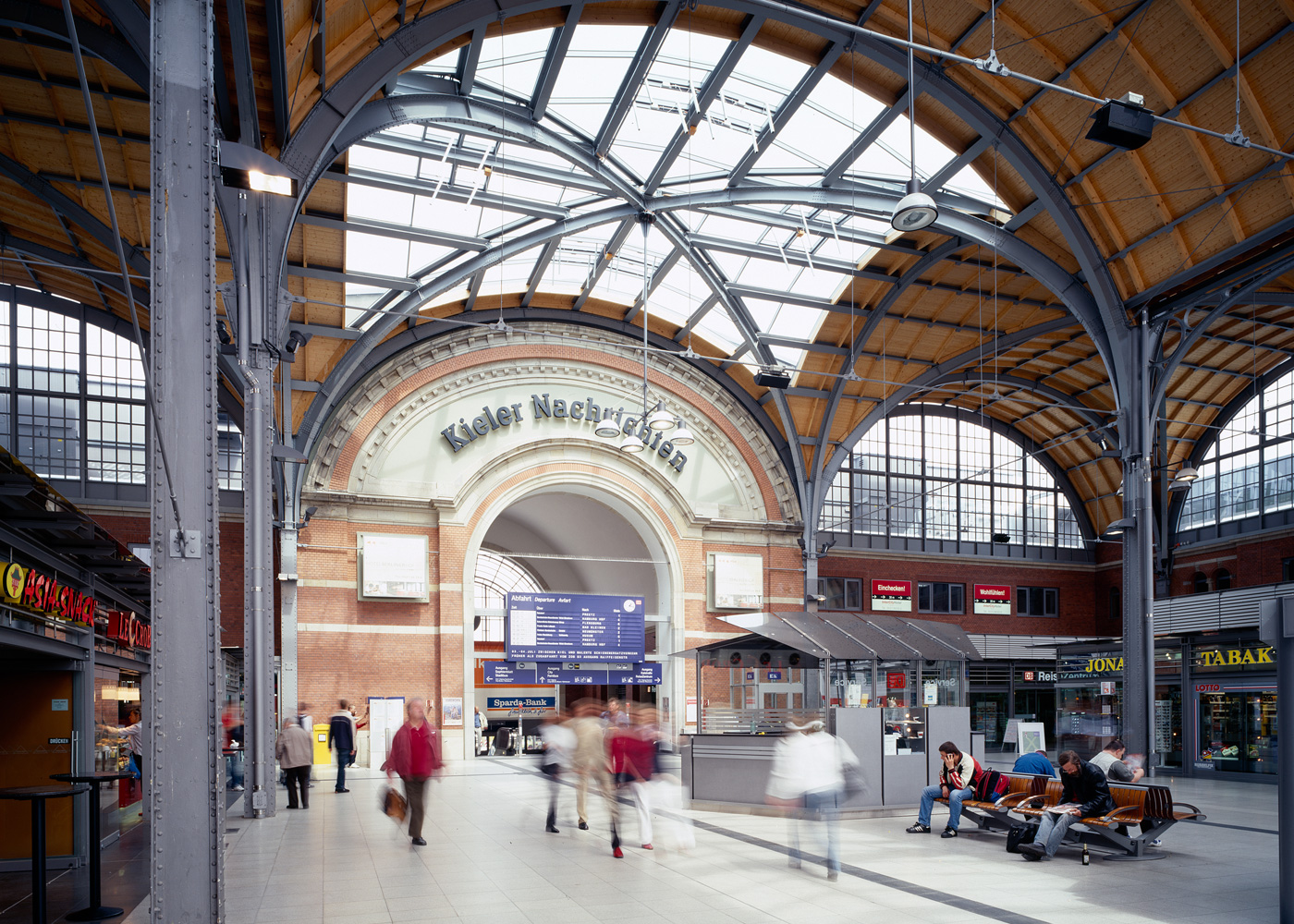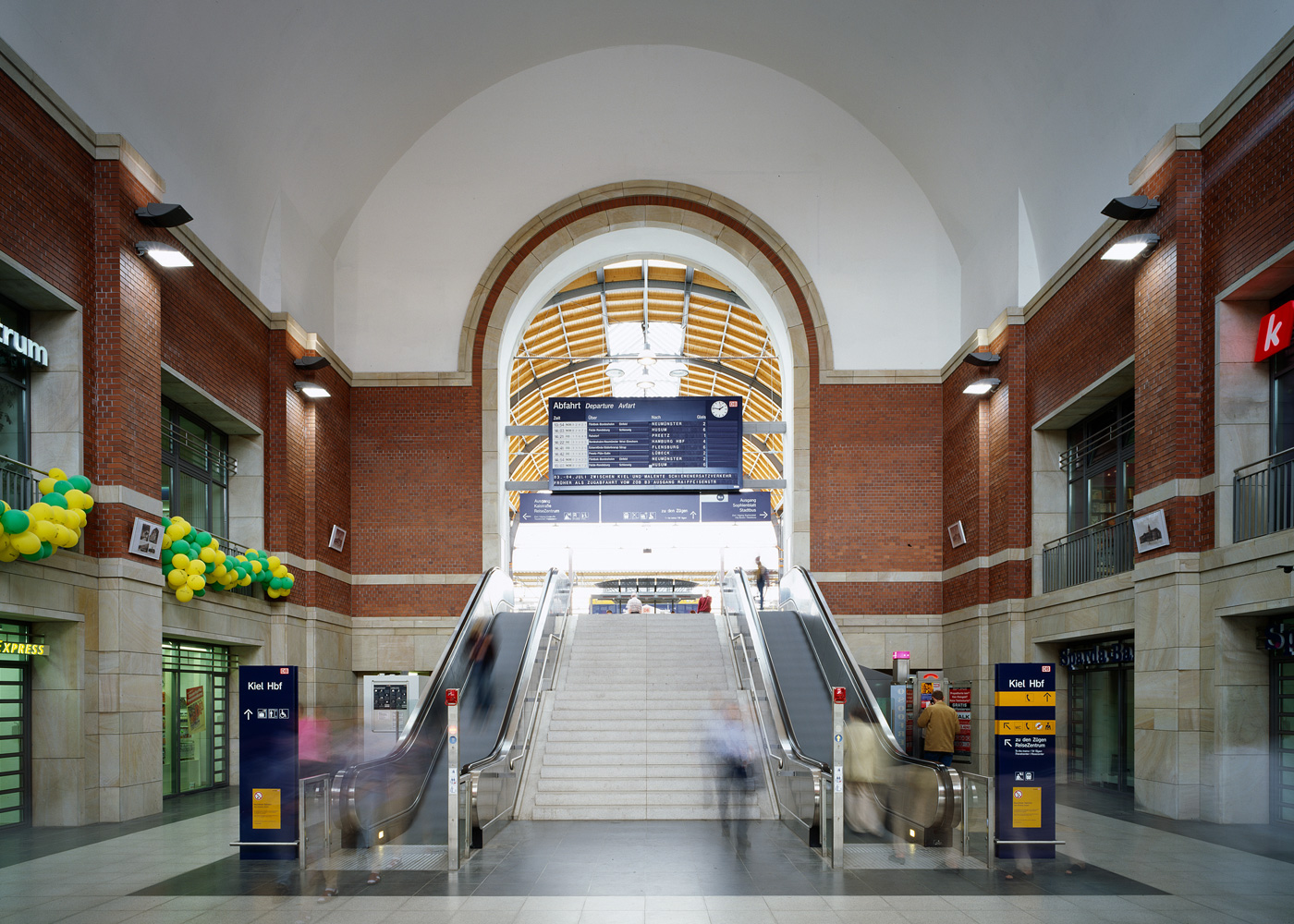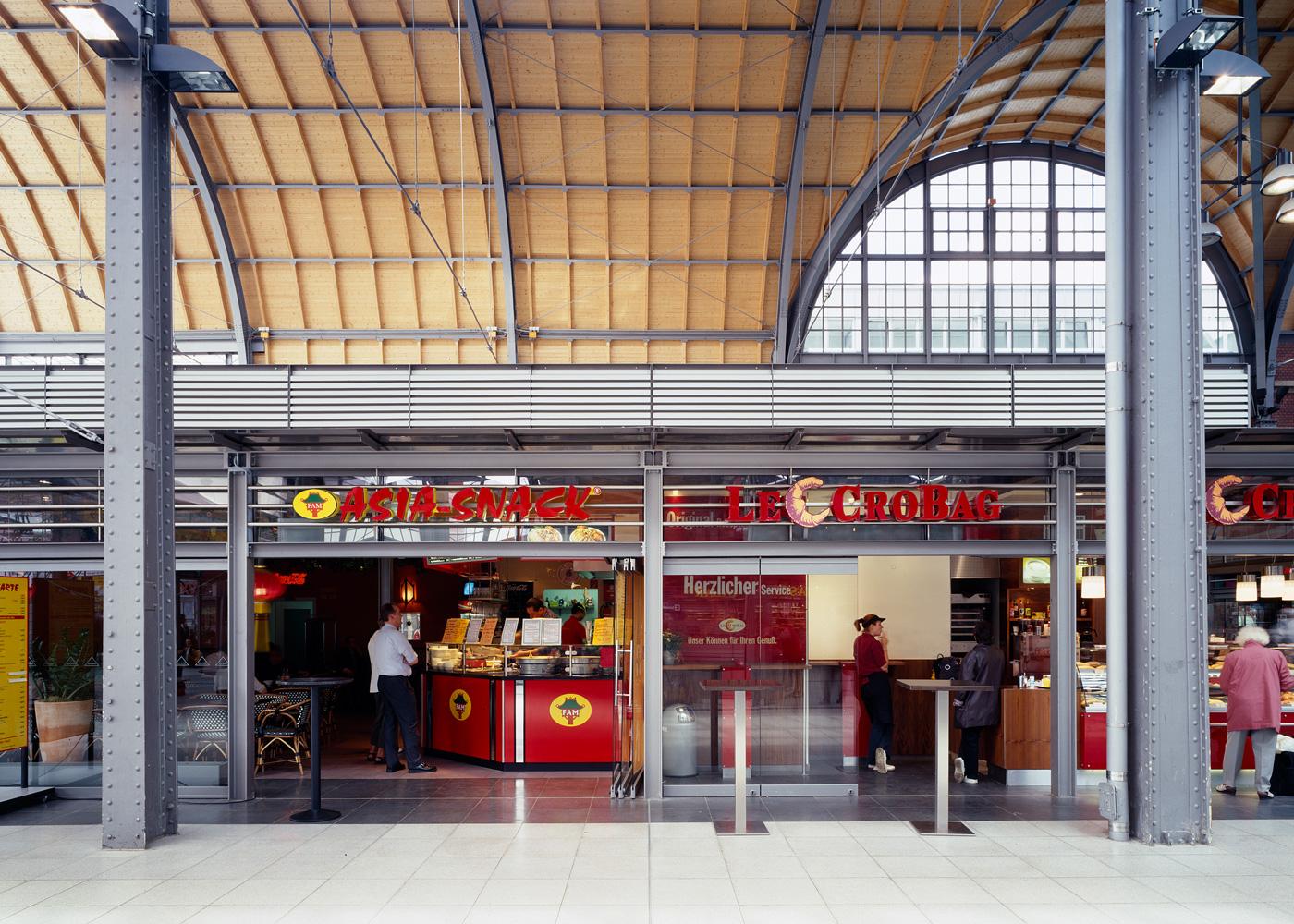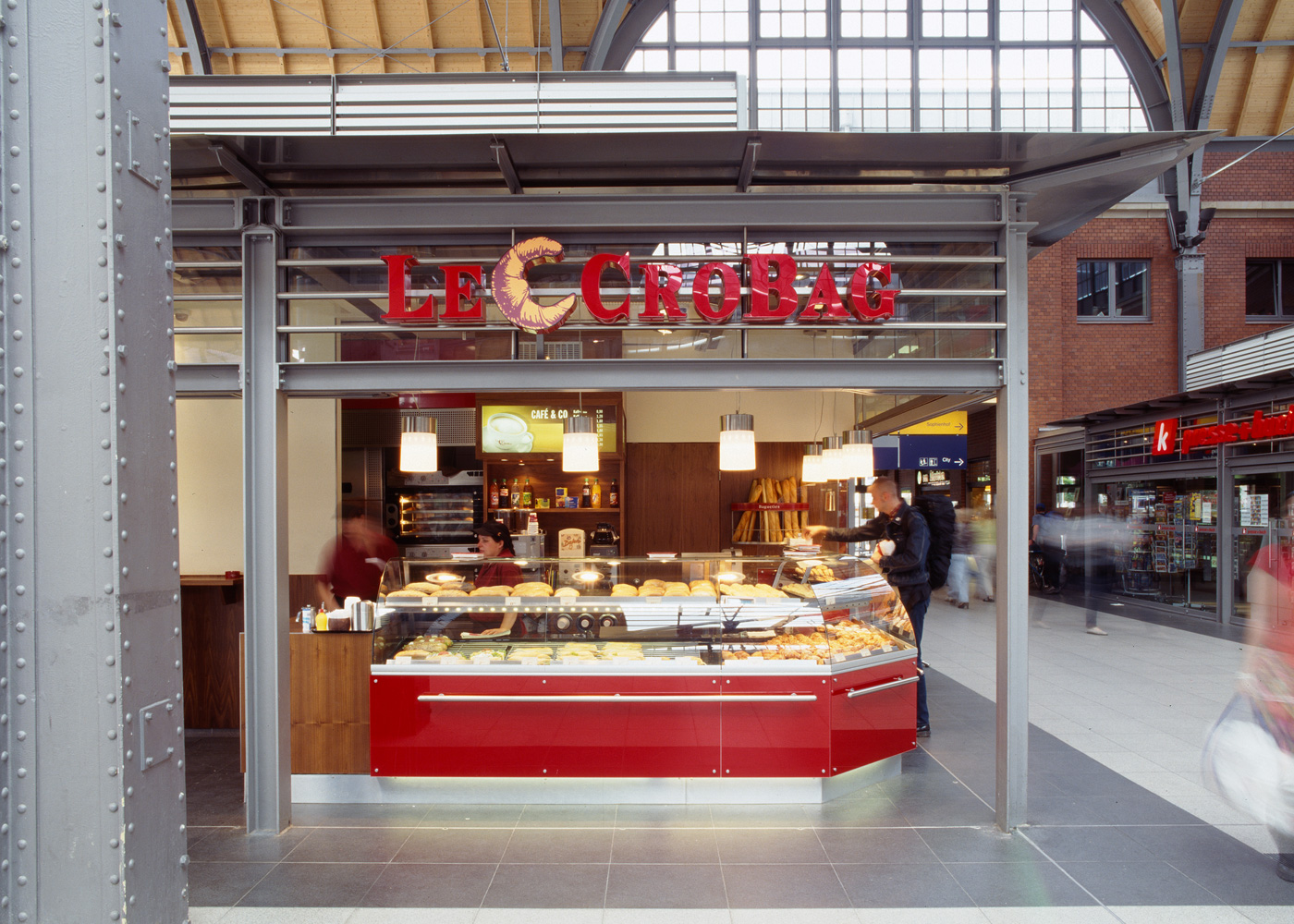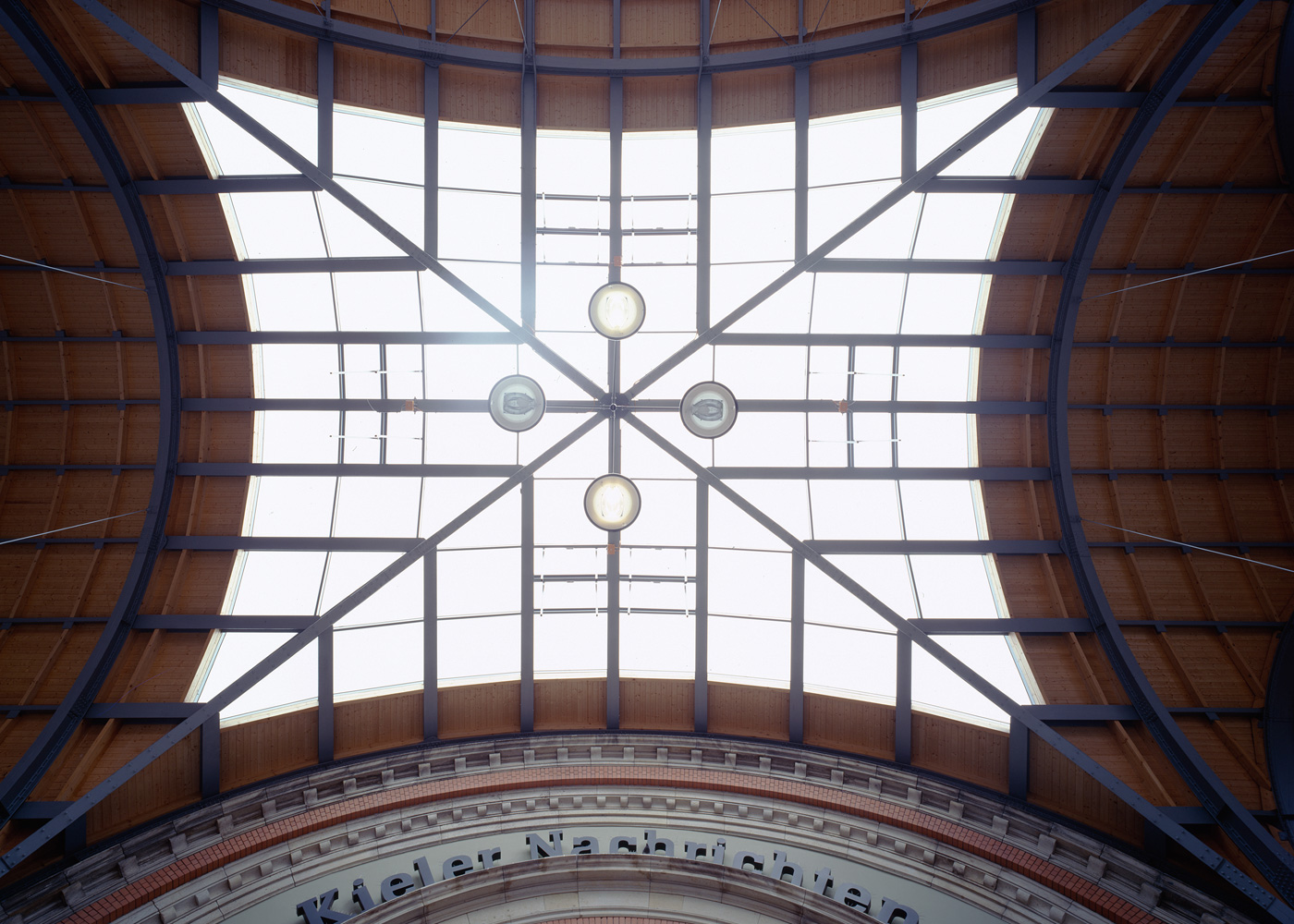Central Railway Station, Kiel
The Kiel Central Station is the second largest in Schleswig Holstein after Lübeck. The six rail terminus is used daily by 25 000 passengers, travelling on more than 240 different trains.
The station is the starting and ending point for many regional lines, for example from Hamburg and Flensburg, with direct connections to Zürich and Berlin. It enjoys a strategically advantageous position on the Kiel bay and passengers are only a short distance away from ferry and cruise terminals.
Following a series of functional and makeshift modifications during the last century, the inner layout of the building in particular required complete modernization and renovation to meet today’s logistic and technical standards and requirements.
The station is the starting and ending point for many regional lines, for example from Hamburg and Flensburg, with direct connections to Zürich and Berlin. It enjoys a strategically advantageous position on the Kiel bay and passengers are only a short distance away from ferry and cruise terminals.
Following a series of functional and makeshift modifications during the last century, the inner layout of the building in particular required complete modernization and renovation to meet today’s logistic and technical standards and requirements.
Project data
Place: Sophienblatt 25-27, 24114 KielBuilder: DB Fernverkehr AG (Regionalbereich Nord), Museumstr. 39, 22765 Hamburg
Planning: 1999 – 2001
Construction time: 2000 – 2003
Costs: 18.000.000 €
Gross volume: 88.650 m³
Photograph: Markus Dorfmüller
Renovation and Modernisation based on historical model
Heavy bombing during the Second World War caused severe damage to the railway station, built first in 1899. It was rebuilt from 1950, although the architectural qualities of this historic station fell by the wayside.
An attempt to return to the original historical plan of the building, employing modern techniques was of the essence. The original interior volume of the building was achieved by removing the suspended ceiling, revealing elements of art deco masonry. A revival of the traditional layout of the central station, with its conservative, but illustrious glory was born.
An attempt to return to the original historical plan of the building, employing modern techniques was of the essence. The original interior volume of the building was achieved by removing the suspended ceiling, revealing elements of art deco masonry. A revival of the traditional layout of the central station, with its conservative, but illustrious glory was born.
Enhancement of Attractiveness of Urban Centre Planning
Working closely with the society for the protection of cultural and historical heritage, mistakes in previous building modifications were removed and the railway station awakened from its sleeping beauty slumber. However, modernization was a priority here, rather than a return to historic measures. An example of this lies in the lengthening of the three ailed platform hall, which was necessary due to the platform extension. The elegant steel construction blends beautifully into the original building and forms a 120m long, by 55 wide architectural interaction.
The Kaiser Portal, bricked up after the war, was reopened and pedestrian ways lead to the Hörn Bridge on the waterfront and to Sophienhof. The Railway Station with its unmistakable exterior lies in between, featuring attractive and modern shopping facilities. More than 100 000 people pass through daily, served by a bus station for local and long distance travel.
The Kaiser Portal, bricked up after the war, was reopened and pedestrian ways lead to the Hörn Bridge on the waterfront and to Sophienhof. The Railway Station with its unmistakable exterior lies in between, featuring attractive and modern shopping facilities. More than 100 000 people pass through daily, served by a bus station for local and long distance travel.

